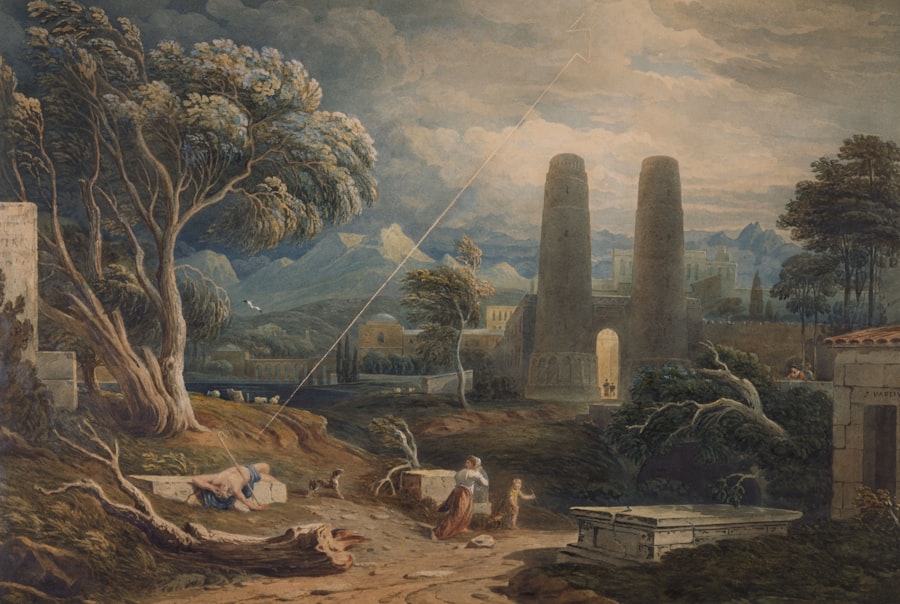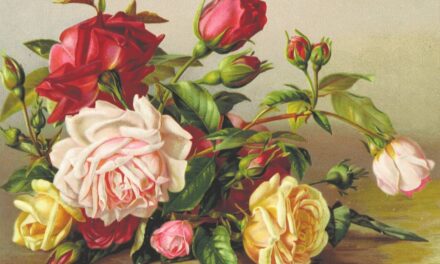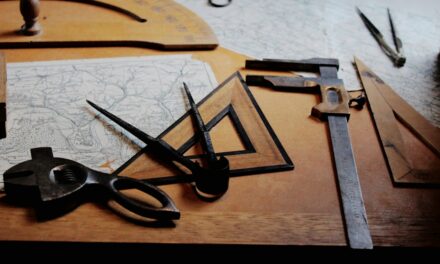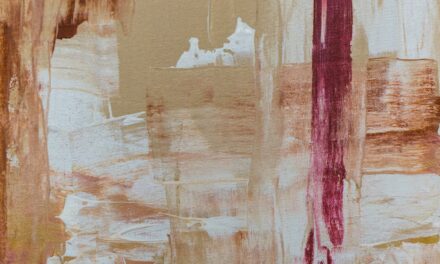The pointillé technique, characterised by the application of small dots or strokes to create an image, has a rich and varied history that can be traced back to the late 19th century. This method emerged as a significant aspect of the Impressionist movement, where artists sought to capture the fleeting effects of light and colour in their works. Georges Seurat is often credited with pioneering this technique, particularly through his masterpiece “A Sunday Afternoon on the Island of La Grande Jatte,” completed in 1886.
Seurat’s innovative approach involved the meticulous placement of tiny dots of pure colour, which, when viewed from a distance, blended together to form a cohesive image. This method not only challenged traditional painting techniques but also laid the groundwork for the development of modern art. The term “pointillé” itself is derived from the French word “point,” meaning dot.
This technique was not merely a stylistic choice; it was rooted in scientific principles of colour theory and optics. Artists like Seurat were influenced by contemporary studies on how the human eye perceives colour and light. The juxtaposition of complementary colours, for instance, was a key element in pointillé, as it allowed for a vibrant interplay that could evoke emotional responses from viewers.
Over time, pointillé evolved beyond its Impressionist origins, influencing various art movements and styles, including Post-Impressionism and Neo-Impressionism. Its legacy can be seen in the works of later artists who adopted and adapted the technique to suit their own artistic visions.
Summary
- Pointillé technique originated in the 19th century as a method of painting using small, distinct dots to create an image.
- Understanding the pointillé technique involves mastering the use of colour theory and optical blending to create the illusion of a full range of tones and hues.
- Materials for pointillé technique include fine-tipped brushes, acrylic or oil paints, and a textured surface such as canvas or paper.
- Techniques for pointillé involve varying the size and density of the dots, as well as experimenting with different angles and pressures to create depth and form.
- Famous artists such as Georges Seurat and Paul Signac are known for their iconic pointillé works, including “A Sunday Afternoon on the Island of La Grande Jatte” and “The Port of Saint-Tropez”.
Understanding the Pointillé Technique
At its core, the pointillé technique is about precision and control. Artists employing this method must have a keen understanding of colour relationships and how they interact on the canvas. The technique involves applying small dots or dabs of paint in a deliberate manner, allowing the viewer’s eye to blend these colours optically rather than physically mixing them on the palette.
This optical blending creates a unique vibrancy that is often difficult to achieve through traditional brushwork. The result is a dynamic surface that can shift in appearance depending on the viewer’s distance from the artwork. Moreover, pointillé is not limited to any specific medium; it can be executed in various forms, including oil painting, watercolour, and even digital art.
Each medium presents its own challenges and opportunities for artists. For instance, in oil painting, the slow drying time allows for greater manipulation of dots and layering, while watercolour requires a more immediate application due to its quick drying nature. Understanding these nuances is essential for artists looking to master pointillé, as each medium can significantly affect the final outcome of the artwork.
Materials and Tools for Pointillé Technique

To effectively utilise the pointillé technique, artists must select appropriate materials and tools that facilitate precision and control. The choice of paint is crucial; oil paints are often favoured for their rich pigmentation and blending capabilities. However, acrylics have gained popularity due to their quick drying time and versatility.
Watercolours can also be used for pointillé, though they require a different approach due to their fluid nature. In terms of tools, brushes with fine tips are essential for creating the small dots characteristic of pointillé. Round brushes or even specialised dotting tools can be employed to achieve varying sizes and shapes of dots.
Some artists may also use palette knives or sponges to create texture and depth within their work. Additionally, the surface on which one paints plays a significant role; canvas, wood panels, and heavy watercolour paper can all yield different results depending on how they interact with the chosen medium.
Techniques and Methods for Pointillé
Mastering the pointillé technique involves several methods that artists can employ to enhance their work. One fundamental approach is to begin with a well-planned composition. Artists often sketch their designs lightly before applying paint, ensuring that they have a clear vision of how the dots will come together to form the final image.
This preparatory step is crucial as it allows for adjustments before committing to paint. Another important method is layering. Artists typically start with a base layer of colour and gradually build up layers of dots to create depth and dimension.
This layering process not only adds richness to the artwork but also allows for greater control over colour mixing and blending effects. Additionally, varying the size and density of dots can create different textures and visual interest within the piece. For instance, denser areas can suggest shadow or depth, while sparser areas may evoke light or highlight.
Famous Artists and Works Using Pointillé Technique
Georges Seurat remains the most prominent figure associated with the pointillé technique, but he is not alone in his exploration of this method. Paul Signac, another key figure in the Neo-Impressionist movement, expanded upon Seurat’s ideas and further developed pointillé into his own distinctive style. Signac’s works often feature vibrant landscapes infused with light and colour, showcasing his mastery of this technique.
His painting “The Port at Saint-Tropez” exemplifies how pointillé can be used to capture the essence of a scene through meticulous dot placement. In addition to Seurat and Signac, contemporary artists have also embraced pointillé in various forms. For example, Chuck Close is known for his large-scale portraits created using a grid system that incorporates pointillé techniques.
His works challenge traditional notions of portraiture by breaking down images into individual dots of colour that come together to form a cohesive likeness when viewed from afar. This modern interpretation highlights how pointillé continues to evolve while remaining rooted in its historical context.
Tips and Tricks for Mastering Pointillé Technique

Patience is Paramount
For artists seeking to master the pointillé technique, several tips can enhance their practice. Firstly and foremost, patience is key; creating an artwork using this method can be time-consuming due to the meticulous nature of dot application. Artists should allow themselves ample time to experiment with different dot sizes and arrangements without rushing through the process.
Colour Theory: The Key to Success
Another valuable tip is to study colour theory extensively. Understanding how colours interact with one another will enable artists to make informed decisions about their dot placements. Experimenting with complementary colours can yield striking results, while analogous colours can create harmonious blends that evoke specific moods or atmospheres within a piece.
Practise Makes Perfect
Additionally, practising on smaller canvases or paper can help artists refine their skills before tackling larger works. This approach allows for experimentation without the pressure of committing to a significant piece right away. Keeping a sketchbook dedicated to pointillé practice can also serve as an invaluable resource for developing techniques and exploring new ideas.
Contemporary Applications of Pointillé Technique
In contemporary art, the pointillé technique has found new life through various mediums and styles. Digital art has opened up exciting possibilities for artists to explore pointillé in ways that were previously unimaginable. Software programs allow for precise control over dot placement and colour blending, enabling artists to create intricate designs that push the boundaries of traditional pointillé.
Moreover, pointillé has been embraced in mixed media artworks where artists combine various materials such as fabric, paper, and paint to create textured surfaces that incorporate dot techniques. This fusion of materials adds depth and dimension to artworks while maintaining the essence of pointillé’s optical blending effects. The resurgence of interest in traditional techniques has also led contemporary artists to revisit pointillé as a means of connecting with historical practices while infusing their own unique perspectives into their work.
Exhibitions showcasing pointillé-inspired pieces have emerged in galleries worldwide, highlighting its relevance in today’s art scene.
Exploring Pointillé Technique in Your Own Artwork
For those interested in incorporating pointillé into their own artistic practice, starting with simple exercises can be beneficial. Begin by selecting a subject that inspires you—this could be anything from a still life arrangement to a landscape scene. Create a rough sketch as a guide before applying paint using the pointillé technique.
Experimentation is crucial; try varying your dot sizes and colours to see how they interact on the canvas. Consider working in layers—start with a base colour and gradually build up your dots to create depth and dimension within your piece. Don’t hesitate to explore different mediums; whether you choose oils, acrylics, or watercolours, each will offer unique challenges and opportunities for expression.
Finally, embrace the process of learning through trial and error. Pointillé requires practice and patience; allow yourself to make mistakes along the way as you develop your skills. By immersing yourself in this technique, you will not only enhance your artistic repertoire but also gain a deeper appreciation for its historical significance and contemporary applications within the art world.
If you’re intrigued by the Pointillé technique and its meticulous approach to detail and texture in art, you might also find the exploration of Mannerism fascinating. Mannerism, like Pointillé, delves into the complexities of artistic expression but through exaggerated forms and unconventional compositions that challenge classical norms. To deepen your understanding of this captivating art style, consider reading An Introduction to Mannerism Art, which offers a comprehensive look into the movement’s unique characteristics and its impact on the course of art history.




